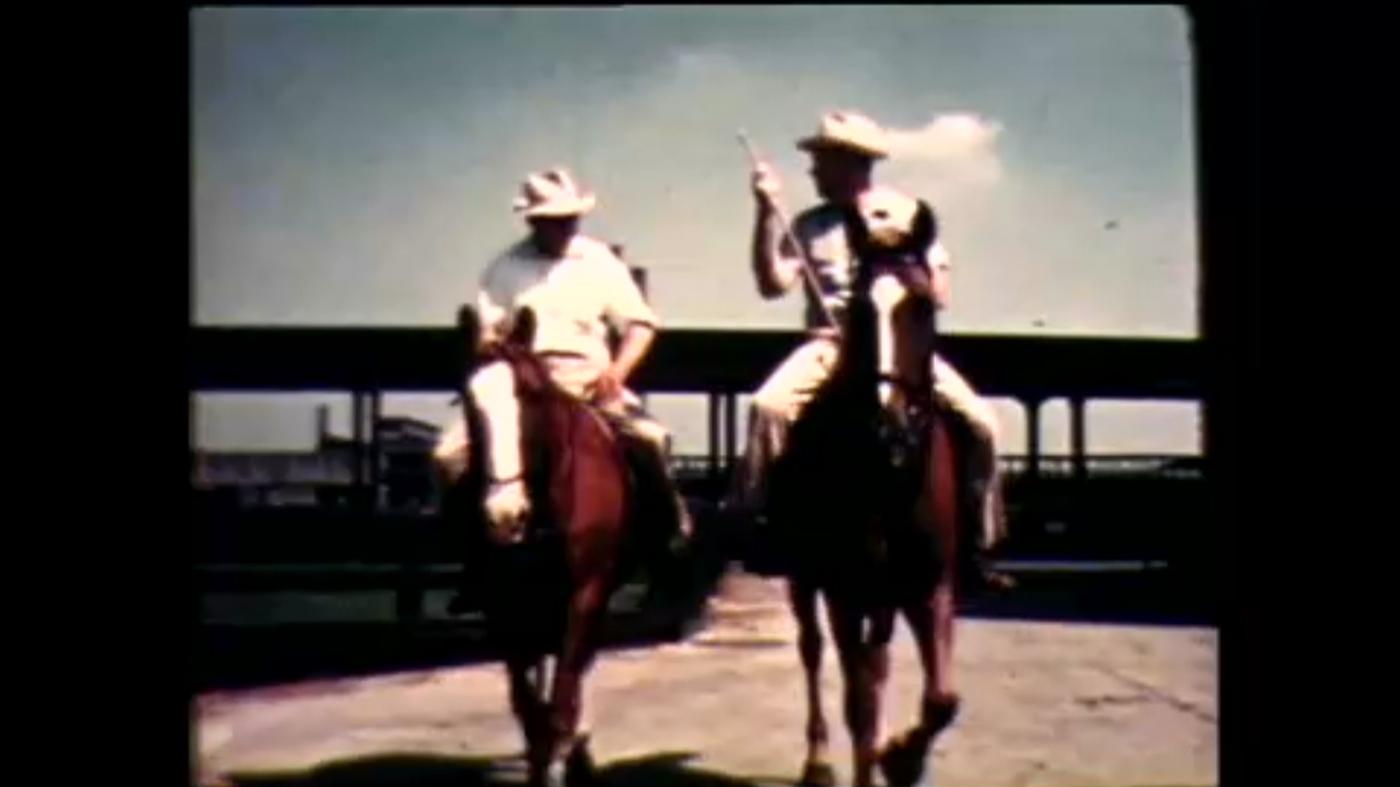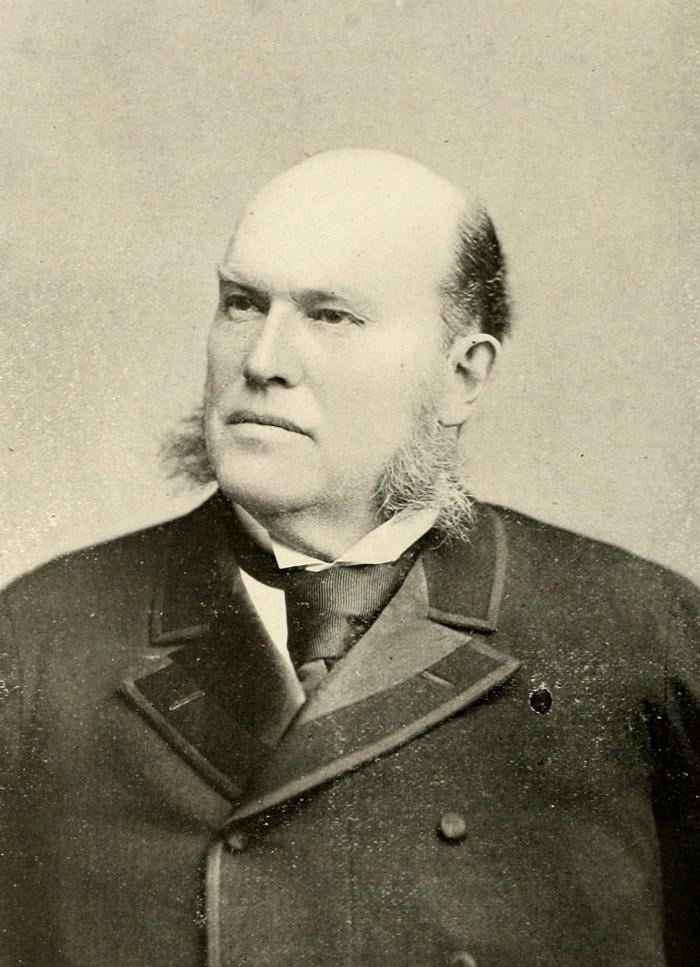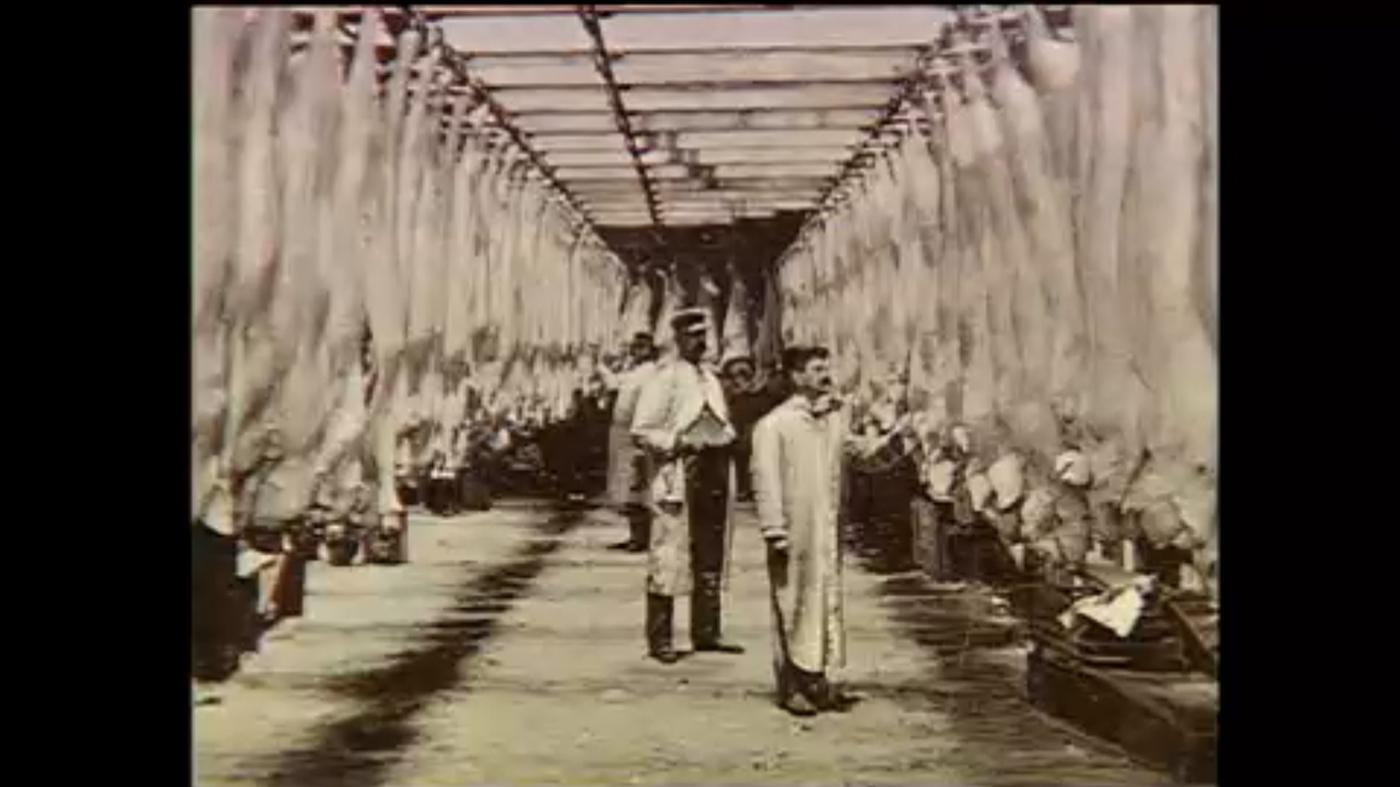When Chicago Was 'Hog Butcher to the World'
Daniel Hautzinger
June 21, 2018

The cowboys looked like they belonged on a ranch, the tourists would have been more at home visiting a theme park, the animals and stench called to mind a farm, the conditions a gruesome battlefield. It’s difficult to imagine the Union Stock Yards if you never saw them: a square mile of livestock pens, slaughterhouses, packing and processing plants, and railroads just upstream from downtown Chicago that at their peak turned eighteen million animals into edible and usable products in a single year.
The stock yards epitomized Chicago, that “Hog Butcher for the World,” in Carl Sandburg’s coinage. They boosted the city’s growth and provided jobs, albeit trying ones, to many of the immigrants who settled here. Some of Chicago’s greatest fortunes were made there, and some of the most bitter labor fights contested. The assembly line, federally mandated meat inspection, and refrigerated rail cars all came out of the stock yards, in addition to the millions of pounds of meat, glue, margarine, fertilizer, gelatin, and leather that they existed to produce.
 The stock yards employed everyone from cowboys to herd the livestock to brokers and butchers
The stock yards employed everyone from cowboys to herd the livestock to brokers and butchers
But before Chicago was the meat capital of the world, that role was held by Cincinnati, which in the mid-nineteenth century was known as “Porkopolis.” But blockades of that city by the Confederates during the Civil War necessitated a new meatpacking headquarters, and Chicago was perfectly situated, with its central location, numerous railroad connections, and proximity to Midwestern livestock farmers. Union Army contracts also stimulated Chicago’s nascent packing and slaughtering businesses, and by 1865, the industry had grown enough that centralization within the city began to make sense. On Christmas Day of that year, seven stock yards and nine railroads consolidated operations to open the Union Stock Yards, the “Wall Street of meatpacking.”
With that foundation, Chicago’s meatpacking industry expanded at a breathtaking pace. The German immigrant Nelson Morris, who had founded his own company in 1859 and was a major leader behind the creation of the Union Stock Yards, made a fortune. So did many others, notably Philip Armour, a Milwaukee pork-packer who moved to Chicago in 1875 and grew his company into the largest industrial employer in the city and one of the biggest businesses in the nation by developing efficient labor divisions that later influenced Henry Ford’s assembly line. And Gustavus Swift, a Boston butcher who developed ice-refrigerated railroad cars to ship cattle around the country, a technology that allowed beef to be sold, butchered, and slaughtered, all in Chicago.
 The efficient divisions of labor in Philip Armour's meatpacking plants inspired Henry Ford's assembly lineThese “Big Three” packers created a lucrative monopoly, with their plants in Chicago, their railroad cars that they leased to the railways, branch plants and cold storage warehouses throughout the Midwest as far as Denver, and packing concerns that used “everything but the squeal” to create non-meat products. In 1905, the muckraking journalist Charles Edward Russell wrote a book titled The Greatest Trust in the World, claiming that the meatpacking industry “is a greater power than in the history of men has been exercised by king, emperor, or irresponsible oligarchy.”
The efficient divisions of labor in Philip Armour's meatpacking plants inspired Henry Ford's assembly lineThese “Big Three” packers created a lucrative monopoly, with their plants in Chicago, their railroad cars that they leased to the railways, branch plants and cold storage warehouses throughout the Midwest as far as Denver, and packing concerns that used “everything but the squeal” to create non-meat products. In 1905, the muckraking journalist Charles Edward Russell wrote a book titled The Greatest Trust in the World, claiming that the meatpacking industry “is a greater power than in the history of men has been exercised by king, emperor, or irresponsible oligarchy.”
Russell’s book was followed the next year by one of the most famous exposés of all time: Upton Sinclair’s The Jungle. While fictional and sensational, the novel was based on Sinclair’s research in the stock yards, and its stomach-churning details led to the passage of the federal Pure Food and Drug Act and Meat Inspection Act. But Sinclair actually sought to support workers’ rights – he famously said that he aimed for the public’s heart but hit its stomach – and conditions at the stock yards were brutal.
Laborers, many of them Lithuanian, Polish, or Irish immigrants who lived in the surrounding slum neighborhoods at exorbitant rents, were paid low wages to work in vile stenches, unbearable heat, and blood and gore that sometimes pooled up to their knees. The jobs were backbreaking and dangerous. As African Americans began coming to Chicago from the South during the Great Migration and took jobs in the stock yards, they faced racism as well as ethnic tension when they were employed as strikebreakers against unionizing employees. After decades of struggle, workers successfully unionized once the New Deal brought about labor protection laws during the Depression.
In the years up until the Depression, from 1893 to 1933, the stock yards processed at least thirteen million livestock a year, reaching as high as eighteen million some years. It took less than twenty-four hours for an animal to go from arrival through being sold, butchered, and shipped off, and the stock yards worked round the clock. Up to 45,000 people were employed there daily. Hundreds of tourists rode the ‘L’ every day to see the facilities, stay at the famous Stock Yard Inn, or eat a prime steak at the Inn’s elegant Sirloin Room.
 Upton Sinclair wanted to expose the brutal working conditions in the stock yards in 'The Jungle' but ended up spurring federal food inspection legislation instead
Upton Sinclair wanted to expose the brutal working conditions in the stock yards in 'The Jungle' but ended up spurring federal food inspection legislation instead
But after a brief revitalization during World War II, the stock yards began to decline. Automation eliminated the need for many of the workers and the stock yards’ multistory facilities, while interstate highways allowed for decentralization, with trucks being used for shipping instead of railroads. Non-union workers in other parts of the country were cheaper, and soon meatpacking began moving to Colorado, Nebraska, Minnesota. In 1955, one of the major by-product processing companies left, and both the Swift and Armour companies soon followed.
The Union Stock Yards closed forever on July 31, 1971, leaving many of its workers with few job prospects. The city’s economy had changed; the stock yards no longer defined it. Bubbly Creek still bubbled from all the pollution leached into it over the years, and the iconic gate still stood, but the meatpacking industry had virtually disappeared. Today, only Chiappetti Meats remains as a sign of the stock yards, and a single tannery survives. Where animals were once shipped, sold, slaughtered, and processed, there now stands an industrial park.
Watch footage shot at the closing of the stock yards on Chicago Tonight.







